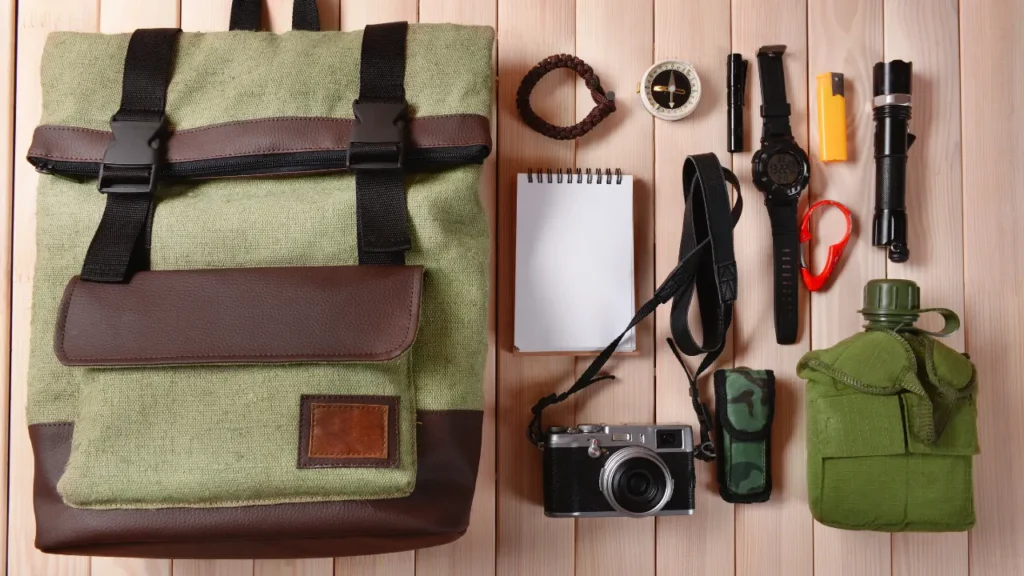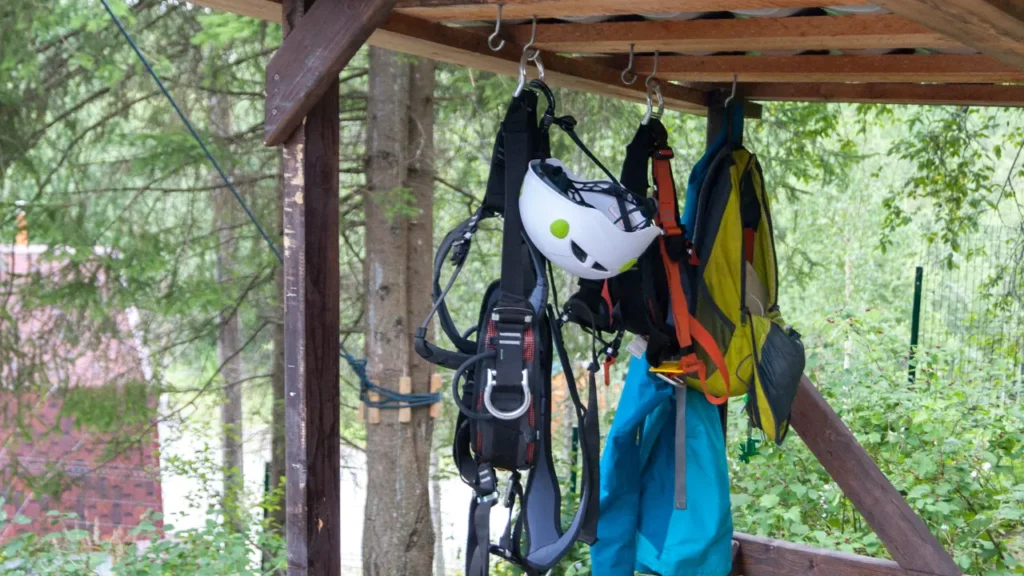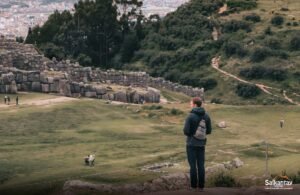Safety gear for waterfall treks includes a helmet, non-slip water shoes, and a life vest. Ensure you carry a first-aid kit and waterproof gear.
Waterfall treks offer an exhilarating experience, blending adventure with the tranquility of nature. Essential safety gear is paramount to ensure your journey is as safe as it is memorable. A sturdy helmet protects against falling debris, while non-slip water shoes provide stability on slippery rocks.
A life vest is a must for any water-based activities, especially in areas with strong currents. It’s also smart to pack a comprehensive first-aid kit to address minor injuries on the spot. Waterproof bags are a trekker’s best friend, keeping electronics and spare clothing dry amidst the mist and spray.
Aligning with these recommendations will help prepare you for a safer outdoor adventure, allowing you to fully immerse in the beauty of cascading waterfalls without undue risk.
Table of Contents
Toggle- Understanding The Terrain And Risks
- Protective Clothing And Footwear
- Safety Equipment For Climbing And Descending
- Emergency Essentials
- Navigation Tools For Waterfall Treks
- Water Safety Gear
- Survival Gear
- Wildlife And Insect Protection
- Frequently Asked Questions On What Safety Gear Is Needed For Waterfall Treks
- Conclusion
Understanding The Terrain And Risks
Thorough research of the specific waterfall location is paramount for ensuring a safe trekking experience. Before embarking on the journey, make certain to investigate the terrain and its nuances as they can greatly influence the type of safety gear required. It is also beneficial to understand the local weather patterns and how they might affect the trail conditions.
Identifying potential hazards in the area is another critical step in preparing for a waterfall hike. This includes being aware of any slippery slopes, rockfall zones, or areas prone to flash flooding. Local wildlife should also be taken into account, as some animals may pose a threat to hikers. Consulting with park rangers or experienced trekkers can offer valuable insights into hidden dangers and recommendations for essential gear to address these risks.
Protective Clothing And Footwear
Water-repellent clothing is essential for waterfall treks, as the mist and spray can quickly saturate regular fabrics. Opting for materials like Gore-Tex or treated nylons that provide a barrier against water yet remain breathable is crucial for comfort and warmth. Quick-drying fabrics are vital since they reduce the risk of hypothermia in cold environments.
Footwear is equally important and should be both sturdy and waterproof. Quality hiking boots with a reliable grip can prevent slipping on wet and uneven terrain. Features to look for include a vibram sole for traction, ankle support to minimize the risk of injury, and a waterproof membrane to keep feet dry. Ensuring proper fit and break-in time before your trek can vastly improve your overall experience.
Safety Equipment For Climbing And Descending
Safety Equipment for Climbing and Descending is paramount for anyone planning a waterfall trek. Proper gear ensures both safety and a smoother experience. Carabiners play a pivotal role in securing the climber to the rope system and should be made of high-quality, durable materials.
A harness is another critical piece, distributing weight and reducing strain during prolonged climbing or descending. It’s essential to choose a harness that fits well and supports your body type efficiently.
Rope technology has advanced, offering various types that are specialized for different climbing conditions. Dynamic ropes are preferable for waterfall treks due to their ability to absorb the energy from potential falls.
On the other hand, safety helmets protect against falling debris and should conform to safety standards, providing full coverage with adjustable straps for a secure fit. Always inspect equipment before each use to ensure it is in perfect condition.
Emergency Essentials
A well-stocked First Aid Kit is an indispensable item for any waterfall trek to handle minor injuries or medical emergencies. Essential contents include antiseptic wipes, bandages of various sizes, sterile gauze, adhesive tape, scissors, tweezers, pain relievers, anti-inflammatory medication, antihistamines for allergic reactions,
hydrocortisone cream, and sterile gloves. Always tailor the kit to the specific needs of the group, considering any personal medications or allergy treatments that might be required.
Reliable communication is crucial during treks where cell service is unlikely. Walkie Talkies or a Satellite Phone can be lifesaving when urgent assistance is needed. These devices ensure a connection with emergency services and support constant contact among group members.

Navigation Tools For Waterfall Treks
Embarking on a trek to a majestic waterfall requires precise navigation tools to ensure a safe and enjoyable experience. Among the essentials are topographic maps, which offer detailed insight into the terrain, contours, and surrounding features of the area. These maps serve as a vital reference, especially when traversing off-the-beaten-path routes or during unexpected detours.
Complementing topographic maps, GPS devices provide real-time location tracking, which is crucial for maintaining your course in areas where trails are not well marked. They also aid in emergencies, enabling rescuers to pinpoint your exact location. The combination of both tools enhances the safety net for trekkers vigorously exploring the natural beauty of waterfalls.
Water Safety Gear
Life jackets are an essential piece of safety equipment for waterfall treks. They provide buoyancy in the water, helping to keep the head above water and reducing the risk of drowning. Whether you are an expert swimmer or not, the unpredictable nature of waterfall currents means a life jacket is a must-have. Opt for jackets that are certified and tested for buoyancy and durability.
Waterproof bags are crucial for protecting your valuables, such as mobile phones, cameras, and wallets. The unpredictability of water splashes and the possibility of accidental submersion make it important to secure items in reliable waterproof bags. These bags come in various sizes and styles, including backpacks, pouches, and cases, ensuring that all your items stay dry even in the wettest conditions.
Survival Gear
Trekking to a waterfall can be an exhilarating experience, but it’s essential to be prepared for any unexpected weather changes or emergencies. Carrying an emergency shelter, such as a lightweight tent, bivy sack, or even a large, waterproof tarp, is crucial.
These shelters can provide a quick refuge from rain, wind, or a temperature change, helping prevent hypothermia and other weather-related illnesses. Setting up your temporary shelter should be a straightforward and rapid process, hence familiarity with your gear before the trek is advisable.
Equally important on your packing list should be reliable fire-starting tools. Options range from waterproof matches and lighters to flint strikers and magnesium fire starters. These tools are not only useful for warmth but can also be crucial for signaling for help in case of an emergency.
Ensure you have a good understanding of how to use them in different weather conditions and always keep them in an easily accessible and dry spot within your gear.
Wildlife And Insect Protection
Equipping yourself with effective insect repellent is critical for a safe waterfall trekking experience. Exposure to mosquitoes and ticks can lead to serious illnesses such as Lyme disease or West Nile Virus. Hence, selecting a repellent containing DEET or picaridin can provide long-lasting protection. Furthermore, wearing long-sleeved shirts and pants treated with permethrin will add an extra layer of defense.
Regarding wildlife encounters, trekkers should stay alert and informed about the types of animals they might encounter. Keeping a safe distance from wildlife and making noise to avoid surprise encounters are fundamental safety measures. Many parks offer wildlife awareness sessions; attending these can provide valuable insights into animal behavior, deterring unwanted encounters, and ensuring your presence doesn’t disturb the local fauna.
Frequently Asked Questions On What Safety Gear Is Needed For Waterfall Treks
What Is Essential Safety Gear For Waterfall Hiking?
Waterfall treks require specialized gear for safety. Essential items include a sturdy helmet, non-slip water shoes, and a waterproof jacket. A life vest is also critical for water-based activities.
Are Specialized Hiking Boots Needed For Waterfall Treks?
Yes, hiking boots for waterfall treks should be waterproof and provide excellent traction. They must have a secure grip to prevent slips on wet and uneven terrain.
What Safety Equipment Is Mandatory For Waterfall Treks?
On waterfall treks, always carry a helmet, life vest, and first-aid kit. Whistles for emergency signals and a waterproof bag for electronics are also mandatory.
How Does A Life Vest Ensure Safety During Waterfall Treks?
A life vest provides buoyancy and helps prevent drowning if one falls into the water. It’s a crucial safety device in strong currents and deep pools found near waterfalls.
Conclusion
Embarking on a waterfall trek demands proper preparation. Ensure you’re equipped with a sturdy helmet, non-slip shoes, and secure ropes. A life vest is non-negotiable for water safety. Always prioritize these essentials. Remember, the right gear is your companion to a safe, remarkable adventure amidst nature’s splendor.
Stay prepared, stay safe, and embrace the journey.



